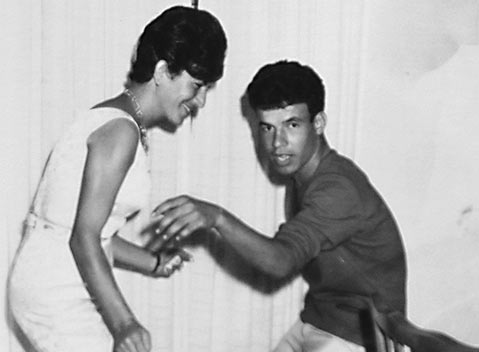Dimona Twist
Director Michal Aviad

Seven Jewish women tell stories of immigrating, and adjusting, from Arab and North African countries to the middle of the Israeli desert in the 1950s and 1960s.
What is your personal connection to Dimona? What drew you to tell these stories?
In the years after Israel’s independence in 1948, over one million Jews immigrated to the new state. Since then, Israeli Jewish society is divided [between] Jews who came from Europe (Ashkenazi Jews) and Jews who came from Arab Countries (Mizrahi Jews). Jews who came from the Arab world claim they were discriminated against, exploited and oppressed by the Israeli European-origin establishment which absorbed them. This explosive debate heavily influences the Israeli government, policies, and culture to this day. I wanted to finally approach immigrants from that generation to find out what really happened. One of the solutions of the 1950’s mass immigration was to build immigrant towns in the Negev desert in the South of Israel. When I started to research for archival films, I found out that very little footage exists from the period, but there were two propaganda films made by the Israeli authorities about the establishment of Dimona.
Why is it important for these women’s stories to be heard?
In my historical films I wish to bring back women into history by listening to their experiences.
[Typically], Israeli history is told from the point of view of men. The women I met told me stories which open a window not only to the trauma of their immigration, but also to the culture they brought, their dreams and hopes before immigration, and the harsh poverty and lack of opportunities they encountered when arrived in Dimona.
How were you able to get archived footage of Dimona in the ‘50s and ‘60s?
One of the problems in making Dimona Twist was that even the little footage there was hardly had any women in it. In the ‘50s and ‘60s the state of Israel and its agencies produced many propaganda films. The films were produced for fundraising purposes among American and European Jews and for documenting the achievements of the settling, educational and political institutions. In those films one could witness immigrant workers building houses, streets, etc. Women usually do most of their work inside and was not perceived at the time as symbolizing the Zionist national goals.The stories of the women in the film were totally different and did not correspond with most of that footage. Luckily I found some footage at the French Television Archive and another source was family albums. But those were not enough. Nobody in Dimona had a super-8 camera, so no amateur films [were] made. To give the experience of living in Dimona at the time, we shot “as if” super-8 films [to tell] pieces of stories. We shot them in the style amateur cinematographers were likely to film.
Why did you decide to tell their stories with this backdrop?
I wanted to allow the viewers to experience Dimona as it was. I was not interested in who is now well off and who is poor, or in the ways they treat their grandchildren. I wanted all of us to try to envision their stories [as] the young women they were.
What is the importance of the Twist to the cultural upbringing of these women?
In 1962, young women arrived in Dimona from big cities like Casablanca. They brought with them records of the latest music in the West, [such as] “The Twist”. The Israeli establishment viewed North African Jews and Arab Jews, as primitive and uncultured. But in fact, many of them, especially the young generation, embraced ideas of “modernity”. They were influenced by French culture through colonialism and were more updated with European popular culture and fashion than the European Jews who came from Eastern Europe. Ashkenazi Jews believed that Jews from Arab countries had nothing to contribute to Israel but backwardness. Bringing “The Twist” to Dimona symbolizes the racist misconceptions of the dominant culture about Mizrahi Jews and the rich lives the immigrants struggled to lead in the middle of the desert.



